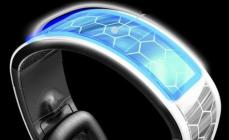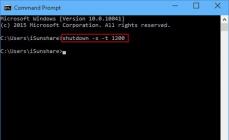Of course, any program or system process that does not work properly causes a number of inconveniences and requires competent intervention to obtain correct results.
The same applies to the process, the usefulness of which has long been controversial, but does not reduce interest in it from users.
And it is precisely the problems with calculating the performance index on the Windows 7 operating system that will be discussed in this article.
The performance index does not work on Windows 7: causes and solution to the problem
To begin with, you should pay attention to standard conditions that may prevent the regular assessment of the performance index or its update, namely:
Mobile work
That is, the computer runs on battery power without being connected to the mains (applicable for laptops/netbooks). Depending on the selected power consumption mode, to extend the battery life of the PC, the system disables/blocks third-party (essentially unimportant) processes, including determining the performance index.
There is not enough free space on the disk
An evaluation scan of the computer as a whole creates a certain text file (log), which is saved on the system disk, and if the free space on the disk does not allow saving the file, then the system will not be able to complete the started process, which leads to such errors.
This problem is unlikely - due to the fact that the created file does not take up much space - but it is still possible, so you should not discount it.
The procedure has already started
Accordingly, if the evaluation process has already started, then re-initiation of the launch will not be available until it is completed.
The evaluation process is blocked by the antivirus
In my personal practical experience, such blocking has not been recorded, but, as Microsoft itself and many users of specialized forums claim, anti-virus software from Kaspersky Lab often blocks this process, recognizing it as unauthorized intervention. In this case, even turning off the antivirus screens does not always help, but only its complete uninstallation.
These are the general criteria/conditions that need to be taken into account when calculating the performance index.
If none of the above suits you, consider other options for solving the problem.
Why Windows 7 does not show the performance index and the system score is not available
An error in the performance index calculation may be accompanied by various messages indicating the cause of the problem, for example:
"Unable to measure video playback performance."
"Unable to measure system memory performance."
"The disk size could not be determined correctly."
Despite this diversity, the methods for solving the problem are approximately the same and are as follows:
System file integrity check and forced evaluation launch
For this:
Go to “Windows\Performance\WinSAT\DataStore\” and manually delete files with the “.xml” extension.
Open the search bar, enter “cmd.exe” and right-click and select “Run as administrator”.
In the command line console that opens, enter and execute “sfc /scannow”, wait until the scan completes and automatically fixes damaged system files.
After scanning, alternately run “secedit /configure /cfg %windir%\inf\defltbase.inf /db defltbase.sdb /verbose” and “winsat formal” to conduct formal evaluation testing;
Finally, reboot your computer and try the normal evaluation test.
Working with NVidia drivers
Many users encountered this problem after updating video adapter drivers from Nvidia: perhaps this is due to unfinished compatibility and optimization of a certain driver version for the laptop or motherboard model. Therefore, you should try to manually remove the drivers from the Device Manager, restart the computer and allow the operating system to independently install the driver it needs.
Or go to the laptop manufacturer's website (for example, Asus) and download the latest optimized drivers for your laptop model/series.
Working with codecs
This option implies that the codec package is either installed incorrectly or is simply missing.
As a solution, try updating all existing codecs. For this:
Open “Start” - “Control Panel” - “Uninstall a program”.
Select the line “K-Lite Codec Pack xxx”, where instead of “xxx” the version you are using will be indicated, and click on the “Delete” button.
Go to the website “http://klitecodec.ru” or “http://codecguide.com” and select the most suitable package “Standard” or “Basic” (for the site klitecodec.ru) or download the “Update” distribution kit on the website codecguide.com.
Addition
Correcting any mistake must be approached with the maximum set of “trump cards up your sleeve.”
It is worth considering and taking into account even those solution options that at first glance may seem completely unsuitable for your situation.
This applies to resolving any error, including errors in the operation of the software for determining the rating/performance index, which was discussed above.
Therefore, the proposed solutions should be supplemented with several points, namely:
- As many users note, in addition to the mentioned antiviruses from Kaspersky Lab, antiviruses from Avast and AVG block the performance evaluation functionality with the same “appetite”.
- Microsoft, on its official English-language technical support resource, provided information that the WinSAT functionality can be blocked by the system if the processor used provides more than 16MB of L3 cache.
An update file is available at this link - https://support.microsoft.com/en-us/help/976932, which will help correct the situation described above. - Many also noted that the error in question included a notification about the absence of the dynamic link library file “MSVCR100.dll”.
You should immediately warn against trying to find and download this file separately, since these actions will not lead to anything good.
Visit the official Microsoft website and download the update package for MicrosoftVisual C++, which includes MSVCR100.dll.
https://www.microsoft.com/ru-ru/download/details.aspx?id=14632 – for Windows with x64 bit size
https://www.microsoft.com/ru-ru/download/details.aspx?id=5555 – for x86(x32)
There is no point in returning to the option of reinstalling the operating system, despite the fact that this advice is voiced by many.
Of course, any program or system process that does not work properly causes a number of inconveniences and requires competent intervention to obtain correct results.
The same applies to the process, the usefulness of which has long been controversial, but does not reduce interest in it from users.
And it is precisely the problems with calculating the performance index on the Windows 7 operating system that will be discussed in this article.
The performance index does not work on Windows 7: causes and solution to the problem
To begin with, you should pay attention to standard conditions that may prevent the regular assessment of the performance index or its update, namely:
Mobile work
That is, the computer runs on battery power without being connected to the mains (applicable for laptops/netbooks). Depending on the selected power consumption mode, to extend the battery life of the PC, the system disables/blocks third-party (essentially unimportant) processes, including determining the performance index.
There is not enough free space on the disk
An evaluation scan of the computer as a whole creates a certain text file (log), which is saved on the system disk, and if the free space on the disk does not allow saving the file, then the system will not be able to complete the started process, which leads to such errors.
This problem is unlikely - due to the fact that the created file does not take up much space - but it is still possible, so you should not discount it.
The procedure has already started
Accordingly, if the evaluation process has already started, then re-initiation of the launch will not be available until it is completed.
The evaluation process is blocked by the antivirus
In my personal practical experience, such blocking has not been recorded, but, as Microsoft itself and many users of specialized forums claim, anti-virus software from Kaspersky Lab often blocks this process, recognizing it as unauthorized intervention. In this case, even turning off the antivirus screens does not always help, but only its complete uninstallation.
These are the general criteria/conditions that need to be taken into account when calculating the performance index.
If none of the above suits you, consider other options for solving the problem.
Why Windows 7 does not show the performance index and the system score is not available
An error in the performance index calculation may be accompanied by various messages indicating the cause of the problem, for example:
"Unable to measure video playback performance."
"Unable to measure system memory performance."
"The disk size could not be determined correctly."
Despite this diversity, the methods for solving the problem are approximately the same and are as follows:
System file integrity check and forced evaluation launch
For this:
Go to “Windows\Performance\WinSAT\DataStore\” and manually delete files with the “.xml” extension.
Open the search bar, enter “cmd.exe” and right-click and select “Run as administrator”.
In the command line console that opens, enter and execute “sfc /scannow”, wait until the scan completes and automatically fixes damaged system files.
After scanning, alternately run “secedit /configure /cfg %windir%\inf\defltbase.inf /db defltbase.sdb /verbose” and “winsat formal” to conduct formal evaluation testing;
Finally, reboot your computer and try the normal evaluation test.
Working with NVidia drivers
Many users encountered this problem after updating video adapter drivers from Nvidia: perhaps this is due to unfinished compatibility and optimization of a certain driver version for the laptop or motherboard model. Therefore, you should try to manually remove the drivers from the Device Manager, restart the computer and allow the operating system to independently install the driver it needs.
Or go to the laptop manufacturer's website (for example, Asus) and download the latest optimized drivers for your laptop model/series.
Working with codecs
This option implies that the codec package is either installed incorrectly or is simply missing.
As a solution, try updating all existing codecs. For this:
Open “Start” - “Control Panel” - “Uninstall a program”.
Select the line “K-Lite Codec Pack xxx”, where instead of “xxx” the version you are using will be indicated, and click on the “Delete” button.
Go to the website “http://klitecodec.ru” or “http://codecguide.com” and select the most suitable package “Standard” or “Basic” (for the site klitecodec.ru) or download the “Update” distribution kit on the website codecguide.com.
Addition
Correcting any mistake must be approached with the maximum set of “trump cards up your sleeve.”
It is worth considering and taking into account even those solution options that at first glance may seem completely unsuitable for your situation.
This applies to resolving any error, including errors in the operation of the software for determining the rating/performance index, which was discussed above.
Therefore, the proposed solutions should be supplemented with several points, namely:
- As many users note, in addition to the mentioned antiviruses from Kaspersky Lab, antiviruses from Avast and AVG block the performance evaluation functionality with the same “appetite”.
- Microsoft, on its official English-language technical support resource, provided information that the WinSAT functionality can be blocked by the system if the processor used provides more than 16MB of L3 cache.
An update file is available at this link - https://support.microsoft.com/en-us/help/976932, which will help correct the situation described above. - Many also noted that the error in question included a notification about the absence of the dynamic link library file “MSVCR100.dll”.
You should immediately warn against trying to find and download this file separately, since these actions will not lead to anything good.
Visit the official Microsoft website and download the update package for MicrosoftVisual C++, which includes MSVCR100.dll.
https://www.microsoft.com/ru-ru/download/details.aspx?id=14632 – for Windows with x64 bit size
https://www.microsoft.com/ru-ru/download/details.aspx?id=5555 – for x86(x32)
There is no point in returning to the option of reinstalling the operating system, despite the fact that this advice is voiced by many.
If your computer is slow, you have problems using programs or watching videos, it makes sense to check your computer's performance. The performance index is used by the Windows 7 operating system to visually and understandably evaluate its own performance. The higher it is, the faster and more powerful the computer, the more complex programs and games it can handle.
What is a performance index
Windows Experience Index (WEI) is a Windows operating system service that allows you to test your computer's performance.
How to find out the performance index
There are several ways to find out your performance index. Let's look at the two simplest ones.
Via "My Computer"

Via the Start menu

As you can see, both methods are quite simple and do not take much time.
What categories are presented in the table
The Performance Index table includes five components:

What do the numbers mean?
The WEI of a computer is determined by the lowest score. The maximum score in Windows 7–7.9, the minimum is 1.0. Let's look at the Performance Index indicators using the example of graphics evaluation.
Table: Performance Index scores and computer functions that correspond to them
Ways to improve computer performance
For a modern desktop computer, the normal performance index starts at 5.0. Please note that the latest drivers must be installed on graphics devices, otherwise the performance may be underestimated.
Most often, the WEI will be 5.9 when using an HDD (hard drive), even if the scores in other categories are significantly higher. This is due to the low access speed of the main hard drive. When replacing an HDD with a solid-state SSD, the HDD performance score rises to 7.9 and becomes the highest in the category table. Using solid state drives significantly improves the overall performance of Windows.
Low graphics performance may be the result of missing graphics drivers or insufficient graphics card performance. To fix a software problem, you should download drivers from the official website of the manufacturer that produced the graphics equipment for your computer. If the drivers are installed correctly, replacing the video card with a more powerful one will help improve the performance index.
Additionally, you can increase your computer's performance by doing the following:

Video: how to increase computer performance
What to do if performance reviews aren't working
It happens that the procedure for calculating the performance index ends in an error. This error can be caused by either software or hardware problems.
Software problems:
- the presence of viruses, Trojans, malware in the system;
- disk errors;
- path or registry errors.
Hardware problems include the failure or incorrect operation of one of the elements.
Software errors are resolved in the following way:
- scanning your computer with antivirus (Malwarebytes), as well as other antivirus utilities;
- checking the hard drive for errors;
- scanning the system for damaged components. To do this, open a command prompt as an administrator and enter the command sfc /scannow, press Enter. The system will automatically check and, if possible, fix damaged system files;
- installation of K-Lite Kodeck Pack;
- system recovery if all else fails (returning the computer to an earlier state - when everything worked - using a checkpoint).
If you suspect problems with the hardware, you need to use the Aida program to check the temperature of the sensors to rule out overheating. Checking contacts, checking RAM memory for errors (for example, with the Memtest86 program), and stress testing the video card will help identify or eliminate problems in the operation of any component. If you are not sure that you can handle it, it is advisable to contact a specialist, since incorrectly performed tests can lead to computer failure.
Often the error is caused by the computer's power supply. Since all elements are operating under maximum load when calculating the performance index, they may not have enough power. If this is a laptop, check the power settings, they should be set to “maximum performance”, and the laptop itself should be connected to the network at this time. If a component problem has been ruled out, it may be time to replace the power supply with a more powerful one. Even a working power supply loses power after a year of continuous use, causing equipment failures and the “blue screen of death.”
The Windows Experience Index (WEI) is made up of several factors: processor power, RAM speed, 2D and 3D graphics performance, and hard drive data transfer speed. The overall score is determined by the lowest score. To increase WEI, there are several ways, including replacing the video card or hard drive, cleaning, checking for errors, etc. If the performance assessment does not work, then you should check your computer for viruses or find errors in the registry. Problems with the video card or power supply of the computer can also cause problems.
Let's go right away Let's evaluate the performance of Windows 7, and then figure out what it is and how to use it. For a more correct assessment, it is worth checking the box in the nutrition plan - ( start - control panel - power supply - high performance) and temporarily disable the antivirus and firewall. You should also close all running applications.
Start - Control Panel - System
And click the blue inscription System rating not available

if you have previously made a performance assessment, then under the table you will see the inscription repeat assessment. If you haven’t checked, then press the button evaluate the computer.

In a couple of minutes, depending on your hardware, you will see performance estimates for the processor, RAM, video card and hard drive.

Now let's have a little debriefing.
The maximum score you can get in Windows 7 is 7.9 points.
The i7-2600 processor with a frequency of 3.4 GHz is slightly outdated and has not been overclocked in any way, the score is 7.7 points, which is not bad in principle.
RAM 16 gb Corsair Dominator with a frequency of 1866 Mhz and timings 9-10-9-27 works with a bang!
The Nvidia GeForce GTX-670 video card also rules with a bang (tested by tests and games)
As we can see in the screenshot, the bottleneck in the system is the hard drive. An indicator of 7.6 points is, in principle, a pretty good result and all because the system has solid state hard drive - SSD with good speed performance, where the write speed and read speed are the same. For conventional screws, the performance rating does not exceed 5.9 points.
Thus, we know our bottleneck in hardware, now, if we have the desire and financial capabilities, we know what we should upgrade. If you haven’t upgraded your hardware for a long time, then the best option would be to sell your old computer and buy a new one. And under no circumstances buy computers in “vegetable” stores. I mean that there are specialized showrooms and stores for such things, but not home appliance hypermarkets. If you don’t listen to advice, you’ll cry.
Unfortunately, prices for ssds are quite high, and their capacity does not yet reach the size of the screws we are used to, but something can still be done. We'll talk about how to speed up your computer in the next article soon.
By the way, if you are confident in your hardware, but the tests showed poor results, then look in the direction of: updating controller drivers, replacing the motherboard, checking voltage at control points, monitoring device temperatures.
http://site/wp-content/uploads/otsenka_proizvoditelnosti.pnghttp://site/wp-content/uploads/otsenka_proizvoditelnosti-150x150.png 2018-04-17T15:24:50+00:00 Lessons Let's immediately evaluate the performance of Windows 7, and then figure out what it is and how to use it. For a more correct assessment, it is worth checking the box in the power plan - (Start - Control Panel - Power Options - High Performance) and temporarily disabling the antivirus and firewall. You should also close everything...The Windows 7 Performance Index is an indicator that, in simple terms, shows how cool your computer is (or how weak it is, depending on who you are). This is a great way to find out whether a given computer is suitable for cool games or all its capabilities come down to moderate carrying of office programs.
Understanding how to find out the performance of Windows 7 is necessary if you are going to buy a computer, but do not understand the hardware, and, accordingly, cannot understand how many megabytes of RAM and how many gigahertz in the process you need for your purposes. In general, if you don’t understand computers at all, then this was invented for you.
Before you find out the Windows 7 Experience Index, you need to click “Start” and select “Control Panel”. Here you need to set the view type to “Category”.
Then you need to go to the “System and Security” section and on the next page, in the “System” section, click on “Windows Experience Index Check”.
And a window with this parameter will open in front of you.
But finding out the Windows Experience Index is not enough. Now you need to understand which one will suit you and which one is too small.
Normal performance index
So, the Windows Experience Index ranges from 1.0 to 7.9. If you are going to do office work on a computer, then you need one with a performance index of 3.0 to 5.0. If your computer work involves serious graphics programs, then you need an index of more than 5.0. If you are going to play the heaviest games, then choose the highest performance index.
The normal Windows Experience Index is at least 3.0. If it is smaller, then working on such a computer will be inconvenient, programs will freeze.
How to improve your performance index
Before you can increase the Windows Experience Index, you need to know how it is calculated. Many people think that from the arithmetic average of each part, but in fact - from the lowest estimate of the hardware. That is, if the indicator turns out to be too low, it means that there is some kind of ballast in the computer that is pulling the entire system down. You can find such ballast in the same window of the performance index - the piece of hardware with the lowest score is the weak link.






